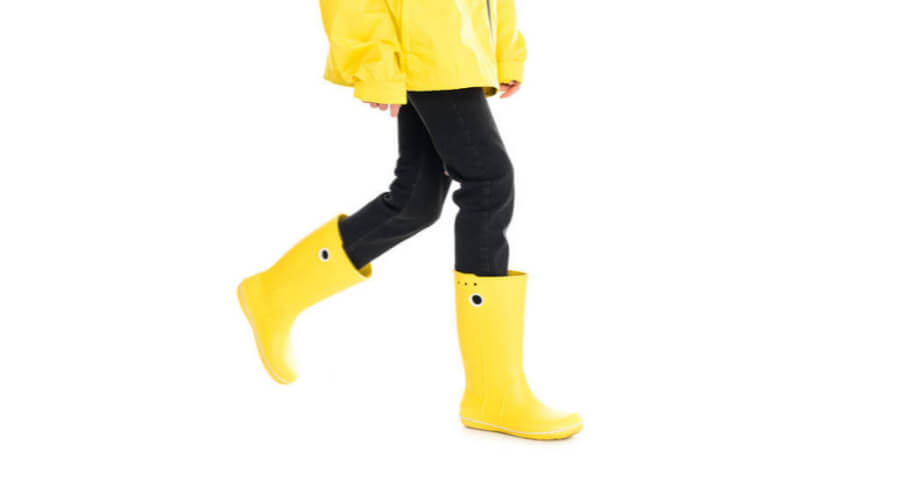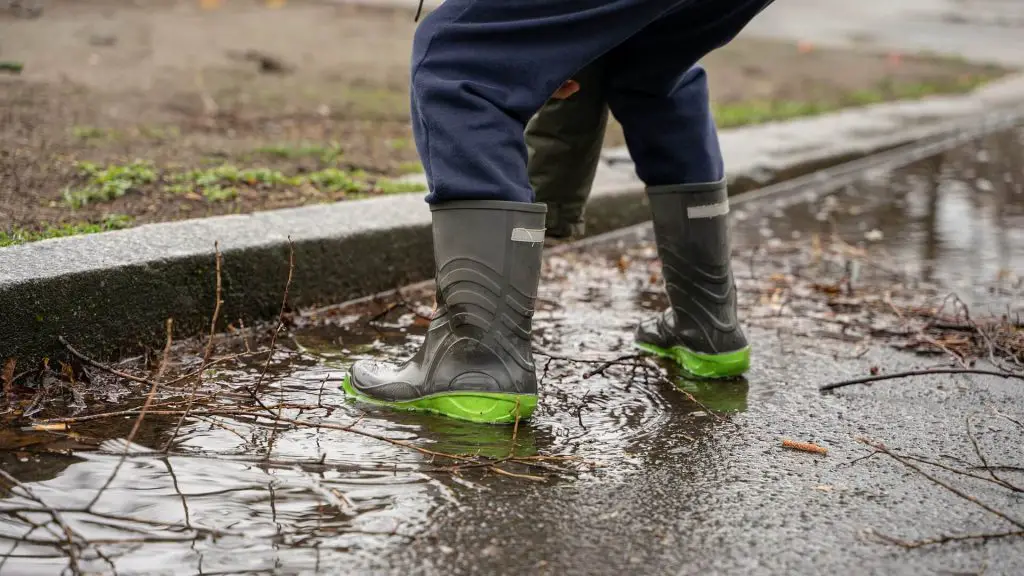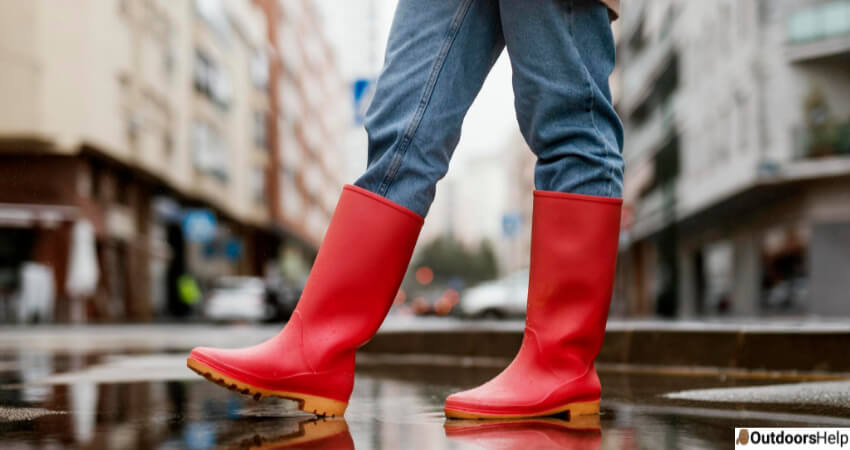Yes, rain boots are functional in snow. However, it would help if you considered many factors like the amount of ice on the streets, the temperature at the time, and the amount of walking you intend to undertake.
What Informs The Choice Of Using Rain Boots In Snow?

Other factors that are important when considering rain boots in the snow are traction and warmth. Because they are made of rubber, they will not provide needed heat or insulation. In some instances, rain boots have been used instead of snow boots, especially when there is little snow covering your sidewalks. The danger with it is you can fall and get injured.
Rain Boots VS. Snow Boots

Most people cannot differentiate between rain boots and snow boots. I am going to show you that there is a difference. They have different functions that they both do best, but rain boots can also serve as snow boots at some point.
Are Snow Boots Different From Rain Boots?
Because you can use rain boots in the snow, the need to have snow boots means they are different.
1. The Suitable Temperature
When you put on snow boots on regular days, your feet will feel a lot of discomforts. During rains, wearing rain boots is ideal. Putting on rain boots when temperatures are lower makes your feet feel cold, and it can lead to sickness.
2. Materials Used
Rain boots are made from rubber on the upper and PVC. It makes it unadorned. The rain boots are flexible when compared to snow boots. Your feet feel comfortable in rain boots compared to snow boots. The lining of the two boots varies. Snow boots have their lining made of plush and fur, making them cozy. The rain boots have their lining made of polyester and cotton materials. The rain boots are lighter than snow boots because of the material used.
3. Design
Because the snow boots are voluminous for your feet, they resemble winter jackets in their design. The rain boots are more styled and more elegant, comfortable, and are suitable for your workplace and wardrobe. Rainboots are also warm, and wearing them on a snowy day cannot be a big challenge.
What You Must Know When Wearing Rain Boots In The Snow
Wearing rain boots in the snow makes them slippery. When the level of snow is thick, slipping is common. In a snow environment, rainboot’s soles won’t hold grip. They are not designed for a snowy climate. When you put them on in a snow environment, then you risk falling.
When it rains, the floor becomes slippery, but the contact between your footwear and the surface remains the same. Your feet keep stable because of the friction generated between your feet and the surface maintains your stability.
Wearing Rain Boots In Snow: A Good Or Bad Idea?
When you do not want to buy another pair of boots for the snow environment, you may consider sticking to your rain boots in icy conditions. It will depend on the intensity of the activity you intend to undertake. If you launch your activities in a reasonably temperate snow environment, rain boots can help you out. Same as snow boots, rain boots will keep your feet from soaking from snow.
When it is freezing, you can be assured because of their PVC and rubber construction. For the case of short outings, rain boots can be significant. If you are driving, rain boots remain the best option because they can keep your feet dry as you walk into your car. For stylistic considerations, rain boots can be subtler. Yes, wearing rain boots in the snow is a good idea.
How To Increase The Grip Of Rain Boot
Your rain boots cannot be useless in a snowy environment because they don’t have the best grip. You can use various techniques to tighten the grip of your soles to the level of holding grip on snowy paths. Here are the ways:
1. Use A Mixture Of Salt And Glue
It is one of the practical but oldest tricks. It is the most straightforward trick that you can use. You will be able to enhance the grip of your boots by mixing glue and salt and rubbing them on the soles of your rain boots, then your soles will attain enhanced traction through the addition of a grainy structure.
2. Scuff The Soles
When you rub your rain boots against abrasive surfaces, you increase the traction. if the boots are new, then this is the best technique that optimizes grip. Be advised to run your pair against gravel or concrete. You have to do it carefully so that you won’t compromise the quality of the boots.
3. Using Grip Pads
If you have used your rain boots, and it has lost their grip, and you do not want to buy a new one, you can enhance the grip using the grip pads. the pads reduce the chances of you slipping and hurting yourself.
Rain Boots That You Can Wear On Icy Environment
1. Tall Suede Boots
The tall Suede boots should be your go-to shoes during cold seasons.
1. They keep you feel warm at all times.
2. They are taller and thus warm your legs above the ankles.
3. They are waterproof therefore suitable for rain and snow environment.
4. They are also soft and lightweight, thus making walking through icy paths easy.
2. Booties
These are the best rain boots that can be useful in icy paths. Waterproof options are the best for snow and rainy environment, and thus you must choose this type. Its height allows you to walk with ease. It allows water to roll off the shoes because of their shiny surface.
3. Hunter Rain Boots
You can be fearless on snow with these rain boots. They are worn with their thick socks to keep you warm on snow paths. They are softer and lighter, making your walking easier and comfortable. They can fit with sweaters in a cold environment.
Conclusion
The choice of whether to wear rain boots in snow depends on your preference. If you feel comfortable when walking in snow paths while wearing your rain boots, go with them. But if you don’t find them satisfactory, opt for ideal snow boots.

